
How to Use Laser Diode Module: Examples, Pinouts, and Specs
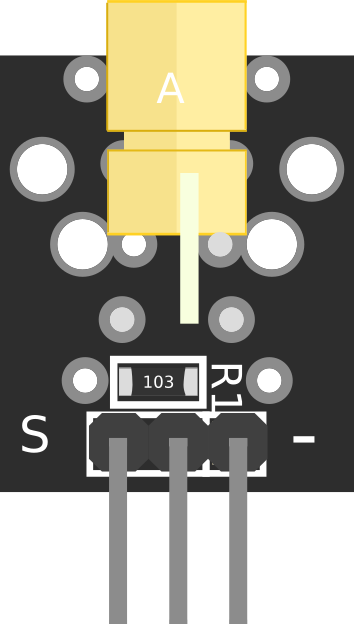
 Design with Laser Diode Module in Cirkit Designer
Design with Laser Diode Module in Cirkit DesignerIntroduction
A Laser Diode Module is a compact device that emits coherent light through the process of stimulated emission. It is widely used in applications requiring precise and focused light beams. Common use cases include:
- Optical Communication: Used in fiber-optic systems for high-speed data transmission.
- Laser Printing: Provides the light source for precise imaging in printers.
- Medical Devices: Utilized in surgical tools and diagnostic equipment.
- Measurement and Sensing: Employed in distance measurement, barcode scanning, and alignment tools.
- DIY Electronics Projects: Popular in hobbyist projects for creating laser pointers or light-based communication systems.
Explore Projects Built with Laser Diode Module
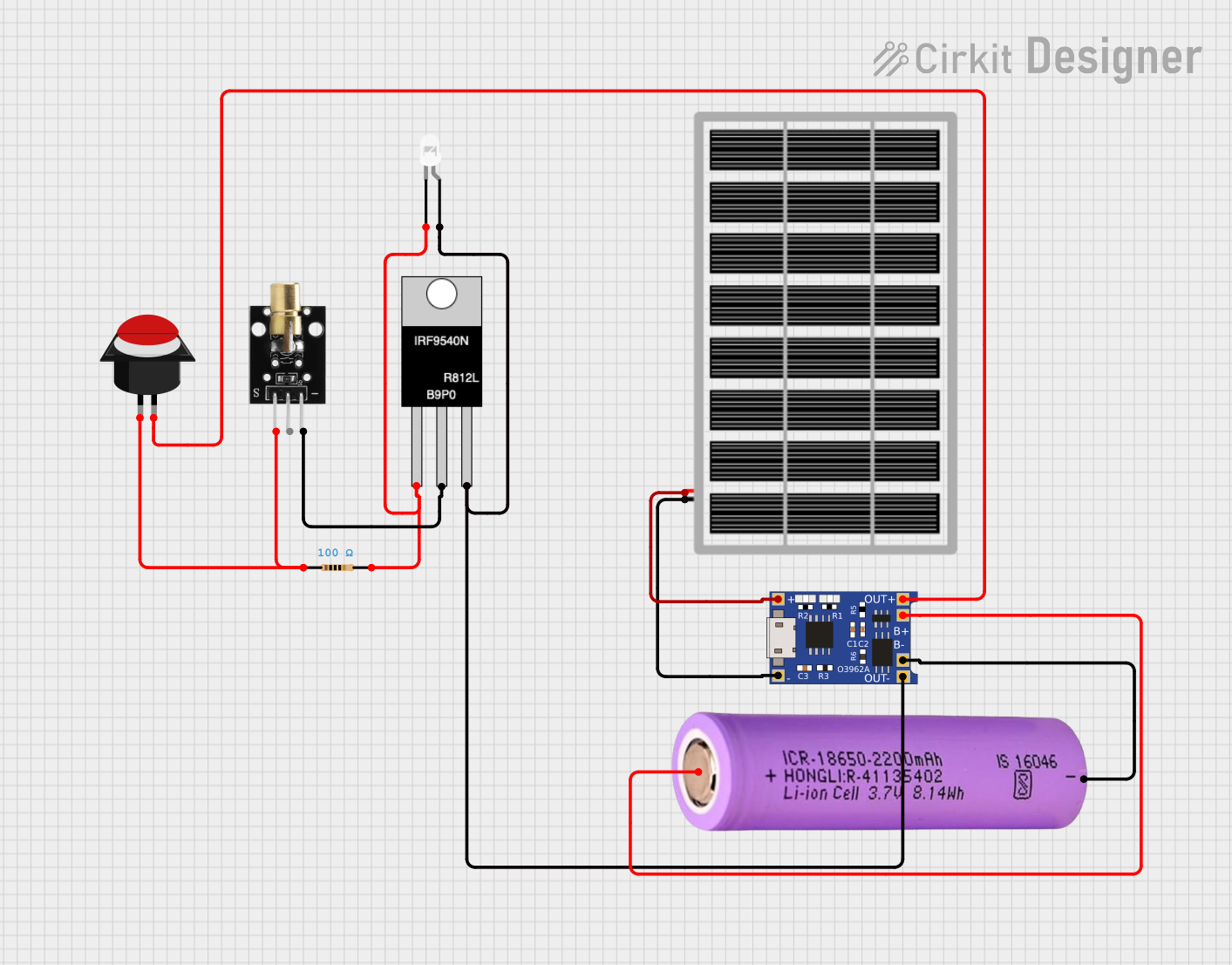
 Open Project in Cirkit Designer
Open Project in Cirkit Designer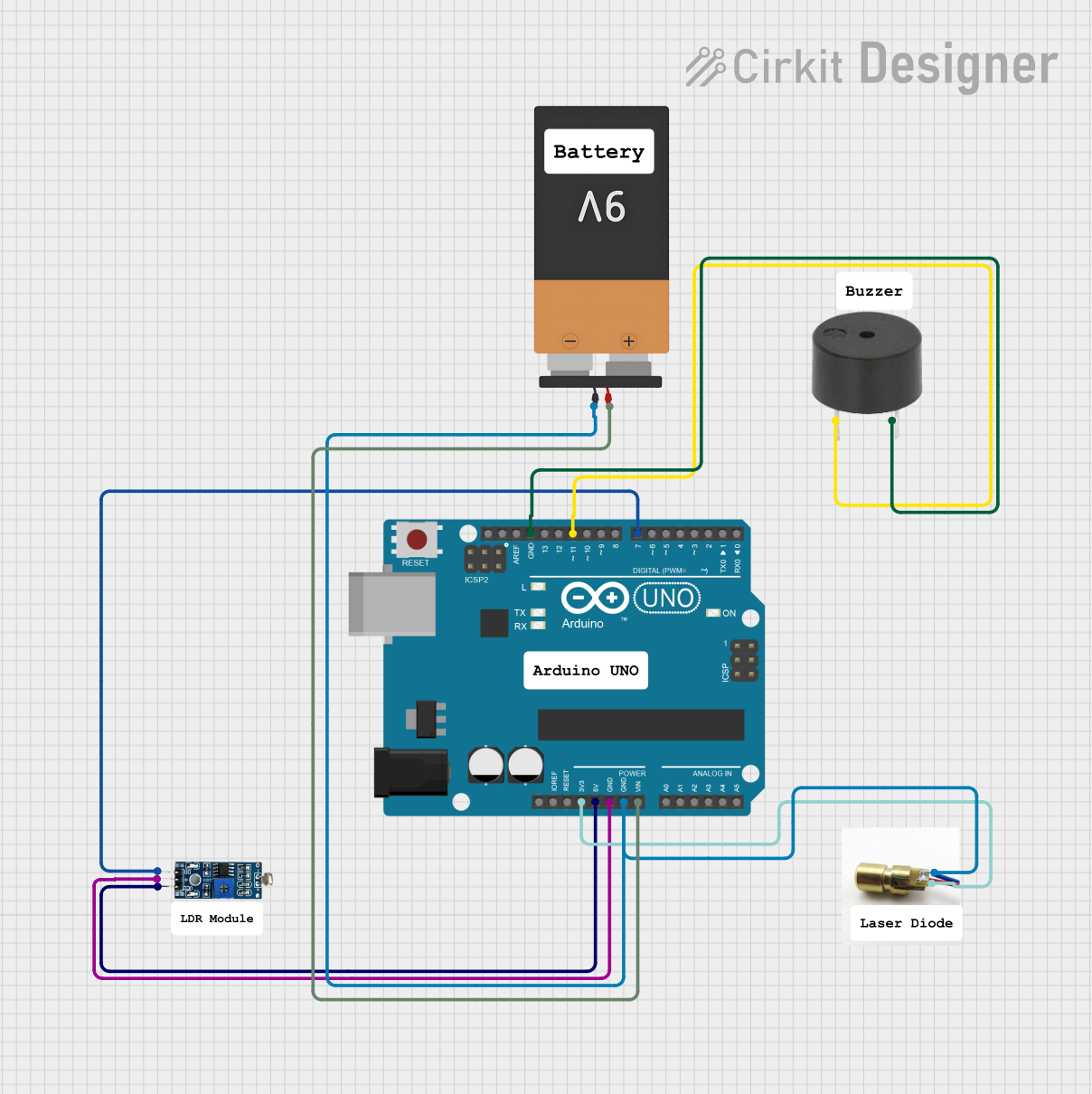
 Open Project in Cirkit Designer
Open Project in Cirkit Designer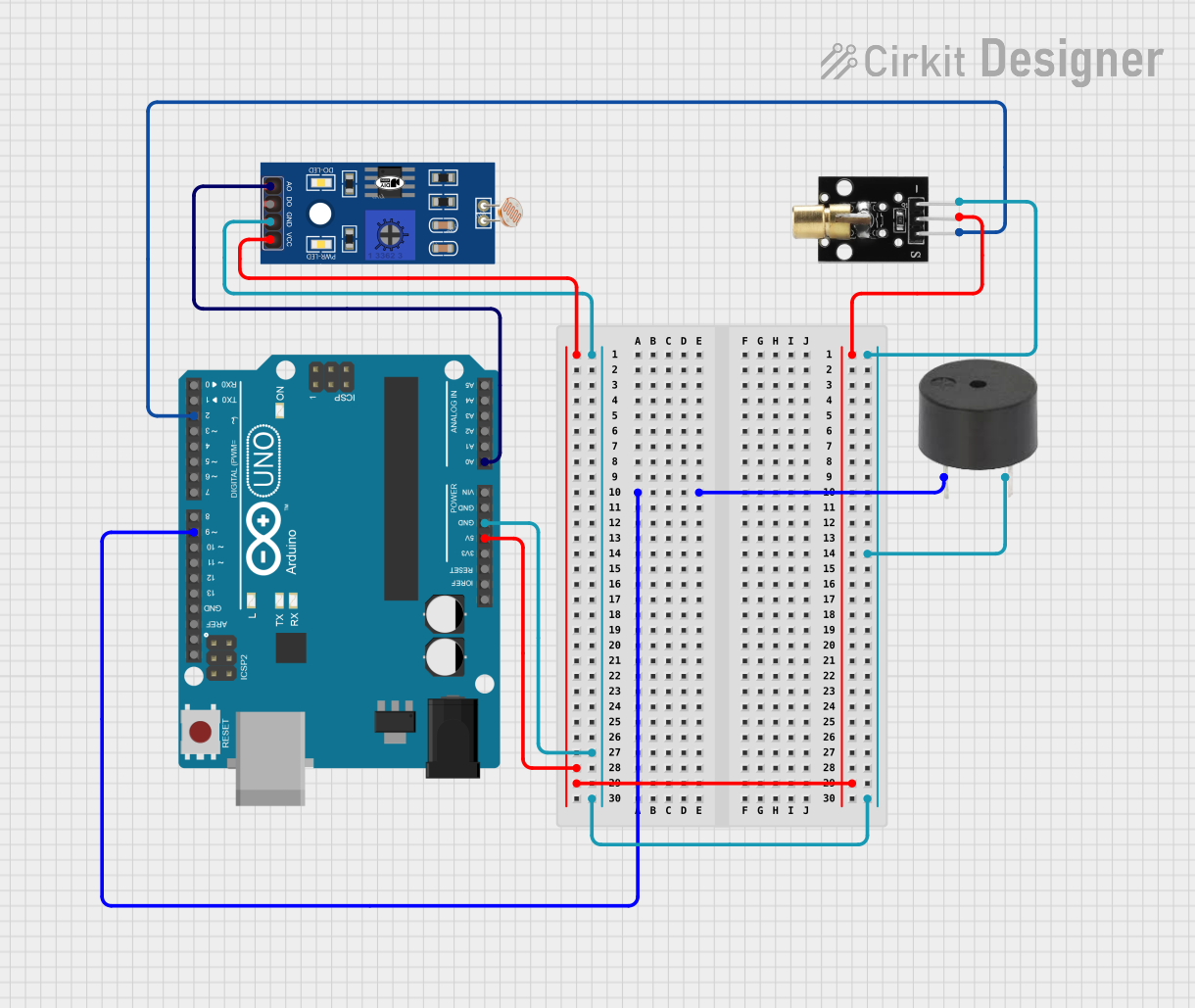
 Open Project in Cirkit Designer
Open Project in Cirkit Designer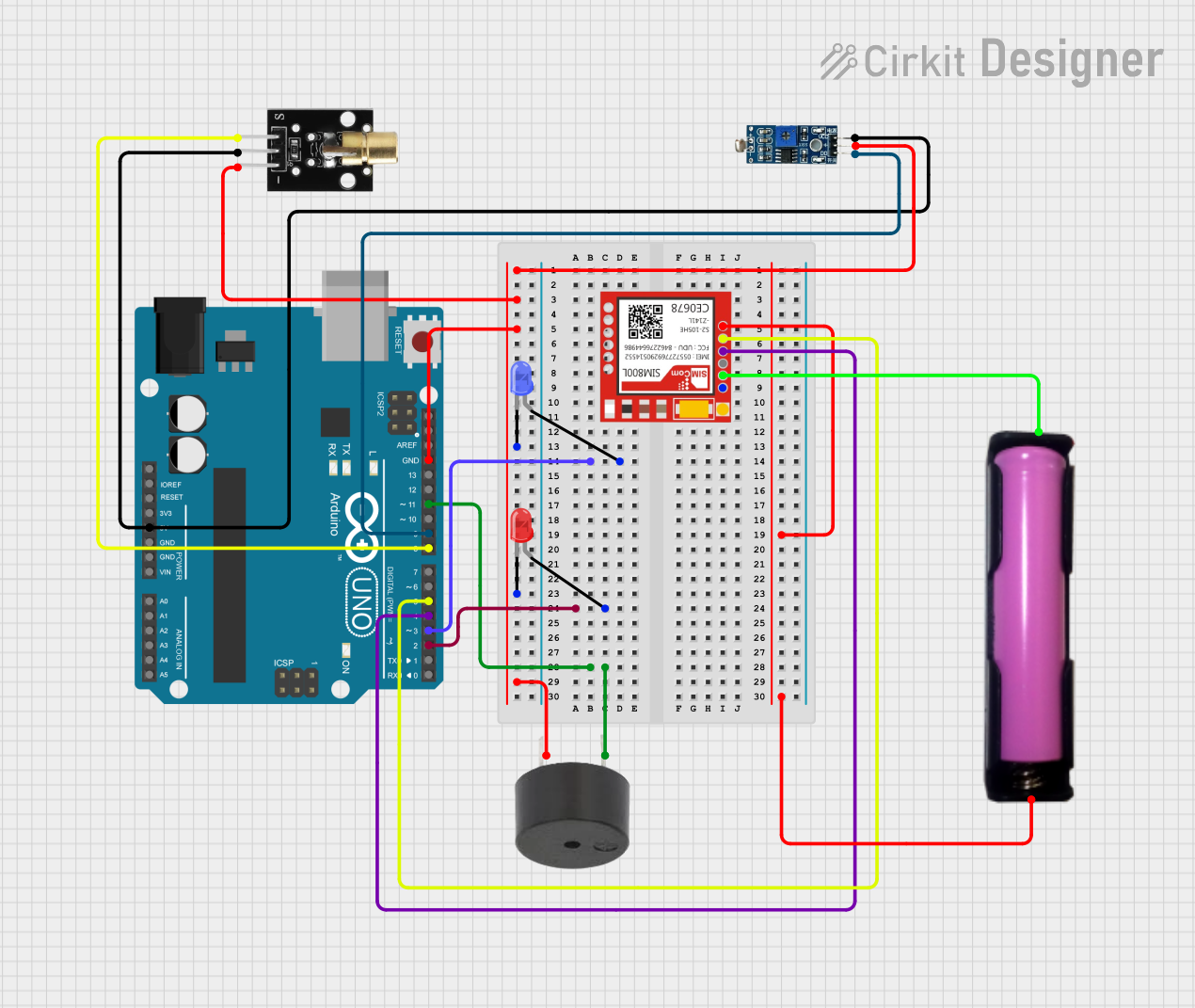
 Open Project in Cirkit Designer
Open Project in Cirkit DesignerExplore Projects Built with Laser Diode Module

 Open Project in Cirkit Designer
Open Project in Cirkit Designer
 Open Project in Cirkit Designer
Open Project in Cirkit Designer
 Open Project in Cirkit Designer
Open Project in Cirkit Designer
 Open Project in Cirkit Designer
Open Project in Cirkit DesignerTechnical Specifications
Below are the key technical details of a typical Laser Diode Module:
| Parameter | Value |
|---|---|
| Operating Voltage | 3V to 5V DC |
| Operating Current | 20mA to 40mA |
| Wavelength | 650nm (Red Laser) |
| Output Power | <5mW |
| Beam Divergence | <1.2 mrad |
| Operating Temperature | -10°C to 50°C |
| Dimensions | 6mm (diameter) x 18mm (length) |
Pin Configuration and Descriptions
The Laser Diode Module typically has three pins or wires for connection:
| Pin/Wire | Description |
|---|---|
| VCC (Red) | Positive power supply (3V to 5V DC) |
| GND (Black) | Ground connection |
| TTL (Yellow) | Optional control pin for modulation (PWM) |
Note: Some modules may only have two wires (VCC and GND) without TTL functionality.
Usage Instructions
How to Use the Laser Diode Module in a Circuit
- Power Supply: Connect the red wire (VCC) to a 3V-5V DC power source and the black wire (GND) to ground.
- Optional Modulation: If the module has a TTL pin, connect it to a PWM-capable pin on a microcontroller (e.g., Arduino) to control the laser's on/off state or intensity.
- Mounting: Secure the module in a stable position to ensure the laser beam remains focused and aligned.
- Safety Precautions: Always avoid direct eye exposure to the laser beam. Use appropriate safety goggles if necessary.
Important Considerations and Best Practices
- Current Limiting: Ensure the current supplied to the module does not exceed its rated value to prevent damage.
- Heat Dissipation: Avoid prolonged operation at high power to prevent overheating.
- Polarity: Double-check the polarity of the connections to avoid damaging the module.
- Environmental Conditions: Operate the module within the specified temperature range for optimal performance.
Example: Connecting to an Arduino UNO
Below is an example of how to connect and control a Laser Diode Module using an Arduino UNO:
Circuit Connections
- Connect the VCC (Red) wire of the module to the 5V pin on the Arduino.
- Connect the GND (Black) wire of the module to the GND pin on the Arduino.
- If the module has a TTL (Yellow) wire, connect it to Pin 9 on the Arduino for PWM control.
Arduino Code
// Laser Diode Module Control with Arduino UNO
// Connect the TTL pin of the Laser Diode Module to Pin 9 on the Arduino.
// Ensure the module's VCC and GND are connected to the Arduino's 5V and GND.
const int laserPin = 9; // Define the pin connected to the TTL input of the laser
void setup() {
pinMode(laserPin, OUTPUT); // Set the laser pin as an output
}
void loop() {
digitalWrite(laserPin, HIGH); // Turn the laser ON
delay(1000); // Keep the laser ON for 1 second
digitalWrite(laserPin, LOW); // Turn the laser OFF
delay(1000); // Keep the laser OFF for 1 second
}
Tip: Use
analogWrite(laserPin, value)(wherevalueis between 0 and 255) to control the laser's brightness if the module supports PWM.
Troubleshooting and FAQs
Common Issues and Solutions
Laser Does Not Turn On:
- Cause: Incorrect wiring or insufficient power supply.
- Solution: Verify the connections and ensure the power supply provides 3V-5V DC.
Laser Beam is Weak or Flickering:
- Cause: Insufficient current or loose connections.
- Solution: Check the power source and ensure all connections are secure.
Module Overheats:
- Cause: Prolonged operation or excessive current.
- Solution: Limit the operating time and ensure the current does not exceed the rated value.
TTL Control Not Working:
- Cause: Incorrect PWM signal or damaged TTL pin.
- Solution: Verify the PWM signal from the microcontroller and check the module's datasheet for compatibility.
FAQs
Q: Can I power the Laser Diode Module with a 9V battery?
A: No, the module is designed for 3V-5V DC. Using a 9V battery without a voltage regulator may damage the module.Q: Is the Laser Diode Module safe for DIY projects?
A: Yes, but always follow safety precautions to avoid direct eye exposure to the laser beam.Q: Can I use the module without the TTL pin?
A: Yes, the module will operate continuously when powered if the TTL pin is not used.Q: How do I focus the laser beam?
A: Some modules have an adjustable lens for focusing. Rotate the lens gently to adjust the beam.
By following this documentation, you can safely and effectively use a Laser Diode Module in your projects.